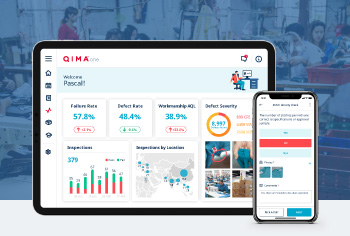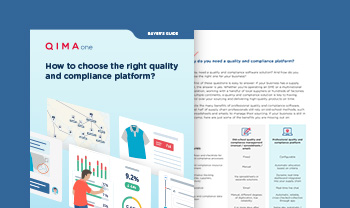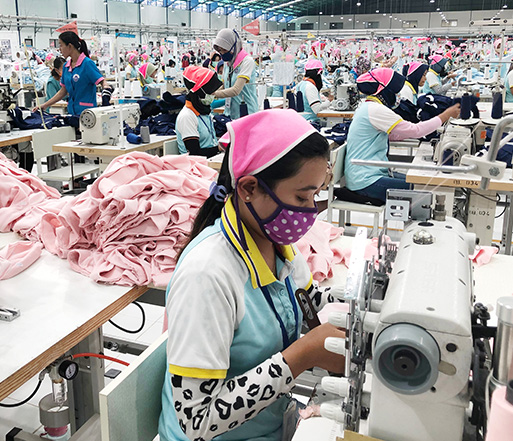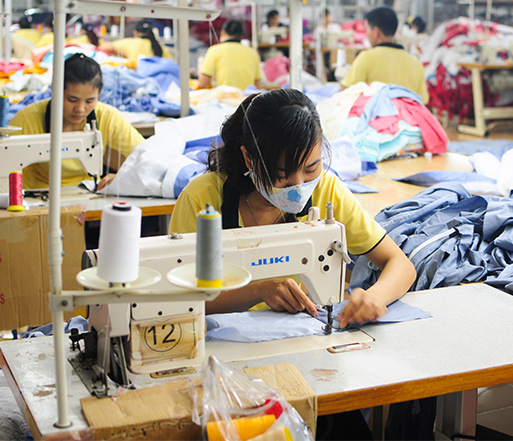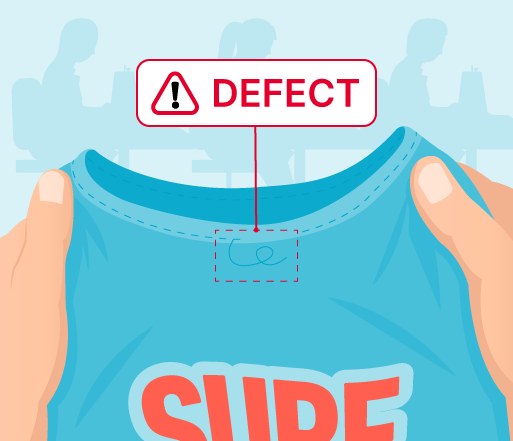
Article
Your 6-step action plan to tackle major garment defects

Article
Your 6-step action plan to tackle major garment defects
Article
Your 6-step action plan to tackle major garment defects

随时了解最新的供应链信息。
Though the world has made progress on the road to recovery from the global COVID-19 pandemic, significant hurdles, like rising costs and supply chain disruptions, still exist that could cut into apparel companies’ bottom lines. For example, a recent report from global business consulting firm Kearney reveals that prices of basic garment supplies have risen dramatically.
Writing for the Harvard Business Review, James B, emphasizes gathering and using data to obtain a complete view of your supply chain, directs the choices you make to build resiliency. Such data can only be collected with end-to-end supply chain visibility.
Deepening the visibility, you have into your supply chain starts with understanding the common defects you encounter and how to resolve them! In this article, we discuss how you can gain supply chain visibility using a 6-step defect prevention framework!
5 common apparel industry defects you can tackle immediately
Managers can have a powerful impact on their brand by using supply chain visibility to address the apparel industry’s common product defects. Those include:
Defective Stitches
The assortment of potential defective stitches are the most-often occurring defects in the garment industry. In addition to being ugly, stitching problems in the material may weaken the structural integrity of the garment fabric, causing premature wear of the product or even ripping of the seam.
Cause and Prevention: Defective stitches are often caused by badly working machines, improperly set-up machines, or as a result of factory workers hand-sewing too fast. The incorrect gauge of needle can also create defective stitches.
Defective Joints
Defective joints are one of the major and more visible garment defects faced by textile owners. Joint defects are a result of mismatching of fabric pieces that are attached by stitches. This defect stands out especially if it’s a mix of two or more fabric colors.
Cause and Prevention: This defect is often caused when the workforce handles the fabric poorly or pays little to no attention during the sewing process. Changing the way machines are set up can help alleviate the problem of defective joints. Generous marking can also ensure the right pieces are properly joined.
Untrimmed Threads
Untrimmed threads are among the most commonly occurring defects in the apparel industry and are the easiest defect to find during internal QA practices. Brands should avoid these defects, to help maintain a positive brand image over a reputation for being “sloppy.”
Cause and Prevention: Dull knives and scissors can result in untrimmed or poorly trimmed threads. You can also address trimming by ensuring your factory layout supports effective processes.
Open Seams
Sewing is one of the most difficult common manufacturing processes and it requires a lot of time and attention to detail. Open seams are a critical issue; inspectors must always be on the lookout for this defect.
Cause and Prevention: Proper worker practices reduce this defect greatly. Reviewing machine set-up and maintenance also helps prevent open seams. Factories need to brief their inspectors to pay close attention to watch for such defects as they can affect the brand’s reputation.
Defective buttons
Defective buttons are caused by various issues across the production line. These defects often occur when the thread tail is too short or less than 3 mm, or if the stitch amount is too low due to inaccurate machine settings.
Cause and Prevention: Loose buttons are a result of incorrect thread tension due to using the wrong size of needle. Uneven buttonholes are usually a result of poor QA processes.
With a proper QA program in place, these common defects, and others that occur less frequently, can be fixed before you experience costly errors or poor customer satisfaction.
Find 3 ways to empower your
suppliers with more data!
Get your guide today!
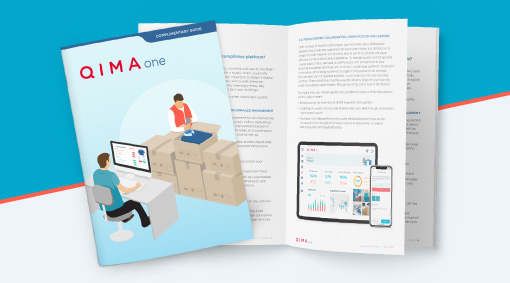
Find 3 ways to empower your
suppliers with more data!
Get your guide today!
Your 6-step action plan to prevent common apparel defects
Our experts have assembled the following checklist to help QA experts manage their priorities as they decide where to invest their time and resources.
Empower your team and suppliers:
Experts agree that supplier knowledge and collaboration are key to improving quality. It is important to keep the workforce healthy and productive by supporting new ways of working.
Identifying your tier-one suppliers to initiate employee-led committees that address work conditions and empowers your mid-level managers to make substantive changes maximizes both productivity and worker morale.
Leverage data to improve visibility:
Data is a valuable tool for building on quality programs and promoting supplier improvement.
Adopt systems that take accurate measurements and deliver them in a timely, easy-to-use report. Analyzing data helps identify small changes in quality before they become costly errors or machinery failures. You can implement a Zero-Defect policy and use your data and visibility to recognize where you’re successful and where you’re not.
Evaluate supply chain risks:
Assess each order for potential risk to proactively develop actionable insights to optimize operational metrics.
Digitize traditional quality reporting for easier review; track supplier compliance and failure rates, using measurable data to compare suppliers and reward those who demonstrate consistency; leverage reporting technologies to improve traceability; rank suppliers by their risk and maintain an updated evaluation for each; maintain communication with on-the-ground experts who can recognize potential environmental or regulatory challenges.
Map your supply chain:
Understanding the actual physical routes your supplies and goods travel helps predict and avoid potential disruptions.
Be proactive in addressing geopolitical shifts; monitor freight routes for changing travel times, costs, routes, and distances; monitor new technological infrastructure for vulnerabilities to cyber-attacks.
Proactively assess inspection and sampling plans:
Annually compare your sampling plans against the International Organization for Standardization (ISO) and make changes to your plans based on updated standards or shifting consumer expectations.
Use inspections to develop and enforce sustainability programs; invite supplier input on sampling plan development; leverage emerging and existing technologies to improve access to sampling data.
Initiate a thorough prevention program:
Use thorough inspection workflow performed during and after production so defective products are identified before reaching the consumers.
Empower factory-level inspectors to make proactive responses to declining quality benchmarks; insist buyers take responsibility for the quality of the goods in their portfolio; optimize communication with suppliers so they feel comfortable reaching out with potential challenges.
In each case, visibility facilitates preventing quality issues before they become disruptive or damaging to a company’s profits. By remaining focused on quality control efforts with the biggest return on the investment of resources, QA professionals ensure the health and flexibility of their supply chain.
How can QIMA help you?
QIMAone is an end-to-end quality control management platform that enables you to digitize and streamline inspections across your global supply chain. Powered with customizable workflows, automation, advanced data analytics and risk prevention radar, supply chain leaders benefit from increased visibility and collaboration across their supply chain. QIMAone is an essential tool in the textile and apparel industry for how it helps businesses identify and prevent common defects, improving customer satisfaction and profitability.
By choosing QIMA, we can help you digitize and maintain standardized quality across all your operations and products! We have :
- Expertise built from millions of inspections performed for consumer goods
- A Global presence with more than 2,500 inspectors available in one click within QIMAone platform
- A best-in-class collaborative software built with the latest technology
